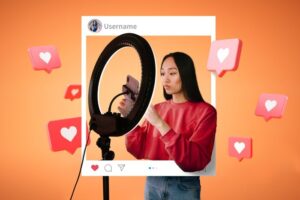What if your next product drop could feel more like a live event than a typical product launch? That’s exactly what live shopping promises and many DTC brands are already seeing 2x, even 3x, conversion rates by going live. But here’s the real question: Is live shopping worth it for DTC brands, or is it just another fleeting trend?
I’ve worked with Shopify merchants long enough to know that not every shiny tactic delivers results. The reality is, live shopping can be a powerful Direct-To-Consumer strategy, but only when used with purpose, not just hype. Let’s cut through the noise and dig into what’s working, what’s not, and whether live shopping deserves a place in your playbook.
Live Shopping 101: It’s Not Just a Video Stream
Let’s clarify something upfront – live shopping isn’t just live streaming with a “Buy Now” link. Done right, it’s a hybrid of commerce and entertainment, built around real-time interaction. Viewers can watch product demos, ask questions, get limited-time offers, and purchase – all without leaving the stream.
This isn’t exactly new. China’s e-commerce scene has mastered live commerce through platforms like Taobao Live, where top streamers generate millions in sales in minutes. But in North America and Europe, we’re still catching up and for DTC brands, that gap represents both a risk and an opportunity.
Live shopping works best when your brand already has a strong voice, a product story worth telling, and an audience that wants to be part of the moment. If that sounds like your DTC brand, keep reading.
Why DTC Brands Are Experimenting with Live Shopping
For DTC brands built on authenticity, storytelling, and community, live shopping isn’t a stretch, it’s a natural extension. Think about it: instead of slick ads or static PDPs, you’re inviting customers to experience your product with you in real time.
But here’s what really makes it interesting: the engagement loop. Your viewers aren’t just watching – they’re asking questions, reacting, buying, and sharing. That interactivity triggers urgency, boosts trust, and turns a static catalog into a dynamic event.
I’ve seen smaller Shopify brands pull in thousands in under an hour by going live during key product drops. One brand we worked with saw a 38% boost in AOV during a live stream compared to their usual launch day numbers. And no, they didn’t need a film crew – just good lighting, a founder who knows the product, and the right platform integration.
The Big Question: Is Live Shopping Worth It for DTC Brands?
Let’s tackle the long-tail keyword head-on: Is live shopping worth it for DTC brands? The honest answer? It depends on three things:
1. Your audience behavior
If your customers engage on social, respond to stories, or frequently join product drops, live shopping will likely work. But if your audience shops in quick, transactional bursts or rarely interacts with content, you may struggle to get traction.
2. Your content readiness
Going live without a story is like launching without a product. Brands that succeed don’t just stream, they host experiences. That means scripting key moments, prepping demos, and treating the stream like a launch event.
3. Your platform stack
If you’re on Shopify, integrations like Livescale, CommentSold, and Shoploop can help you plug into live commerce without custom builds. The key is choosing a platform that fits your marketing workflows, not one that adds more complexity.
So, is it worth it? For brands that can tell a compelling product story and rally a community, it’s more than worth it. It’s a new channel with real conversion upside.
The Technical Side: Tools That Work with Shopify

There’s no shortage of live shopping platforms out there, but most fall into two camps: social-based and Shopify-integrated.
If you want full control, platforms like Livescale offer direct Shopify integration, shoppable video overlays, and real-time analytics. That’s perfect for branded streams where you want to keep the experience on your domain.
Alternatively, if you’re leaning on social traction, TikTok Live, Instagram Live, or YouTube Live with checkout links can work too. Just keep in mind: you’ll need to sync inventory and promo logic back to Shopify manually or with third-party tools.
What I recommend? Start simple. Pick one product, use a native Shopify integration, and stream to your warmest audience first. Don’t aim for production perfection – focus on clarity, energy, and usefulness.
What Goes Wrong (And How to Avoid It)
Not every brand that tries live shopping wins. I’ve seen great products flop on stream because the brand wasn’t ready. Here are a few of the most common pitfalls and how to avoid them:
- Low production quality
You don’t need studio gear, but blurry video and bad audio kill trust. Use a smartphone, tripod, ring light, and decent mic – no excuses. - Weak scripting
If you “just wing it,” your message will get lost. Script key talking points, demo flow, and promo callouts. Think of it as a sales page, just verbal. - Wrong audience targeting
Promoting a stream to cold traffic rarely converts. Start with your loyal followers, email subscribers, or Instagram audience – they’re your best bet for early traction. - No follow-up strategy
Treat your live shopping session like a product campaign. Send reminders, retarget viewers, and leverage FOMO through limited-time replays or post-stream promos.
Real Example: Scaling a Drop with Live Shopping
One clean skincare brand we consulted (built on Shopify, 8K IG followers) ran a live session for their new exfoliating serum. They:
Gave early access to email subscribers
Teased the stream on Instagram Stories 3 days ahead
Hosted it using Livescale with integrated checkout
Used a founder-hosted demo + Q&A format
Offered a 15% stream-only discount for 24 hours
Result? A 27% conversion rate during the stream, double their average, and a 41% uplift in daily revenue over the 48-hour promo window. Production cost? Under $200.
They didn’t go viral but they did convert their warm audience into eager buyers.
How to Make It Work: Targeting Without More Traffic

The smartest part of live shopping? You don’t need more traffic. You need more relevance and urgency.
Here’s how to target better without increasing spend:
- Segmented invites:
Send stream invites only to product past-buyers or high-LTV customers. You’ll drive more action with fewer eyeballs. - Leverage post-purchase flows:
Include a “VIP live drop” teaser in your order confirmation emails. People who just bought are more likely to come back and join a live stream. - Use Shopify data to tailor content:
Pull product usage questions from reviews and support tickets. Answer them live. It builds trust and reduces friction. - Replays with intent:
Use replays in abandoned cart flows or remarketing. Add “As seen live” stickers or trust markers on PDPs for products featured in streams.
This isn’t about virality, it’s about retention, conversion, and emotional brand recall.
The 2025 Outlook: Not a Trend, a Channel
By 2025, I don’t see live shopping as a fad, it’s shaping up as a standalone sales channel. TikTok and YouTube are doubling down. Meta’s already running tests. And Shopify? It’s partnering with more live commerce platforms every quarter.
But here’s what makes it valuable: the feedback loop. Live shopping gives you real-time customer reactions. You see what questions come up, what demos land, and what incentives work. That’s priceless data for your entire funnel.
It’s not about replacing your storefront, it’s about complementing it. Especially for brands looking to stand out without constantly discounting or pouring cash into paid ads.
If your DTC brand thrives on energy, connection, and product storytelling, this is your moment to own the format before everyone else catches up.
Final Thoughts
Live shopping isn’t the next big thing. It is the big thing, if you approach it with strategy and authenticity. As a Shopify expert working with DTC brands daily, I can tell you: the brands winning in 2025 are the ones who don’t just follow trends, they make them work on their terms.
So, is live shopping worth it for DTC brands?
Yes – if you treat it like a real channel, not a side experiment.
Yes – if you bring the same energy to the stream as you do to your product design.
And yes – if you’re ready to sell live, not just talk live.
Frontlevels helps Shopify brands bring live shopping into their stack, minus the tech headaches. Ready to turn real-time engagement into conversions? Let’s build your first live shopping strategy together.

